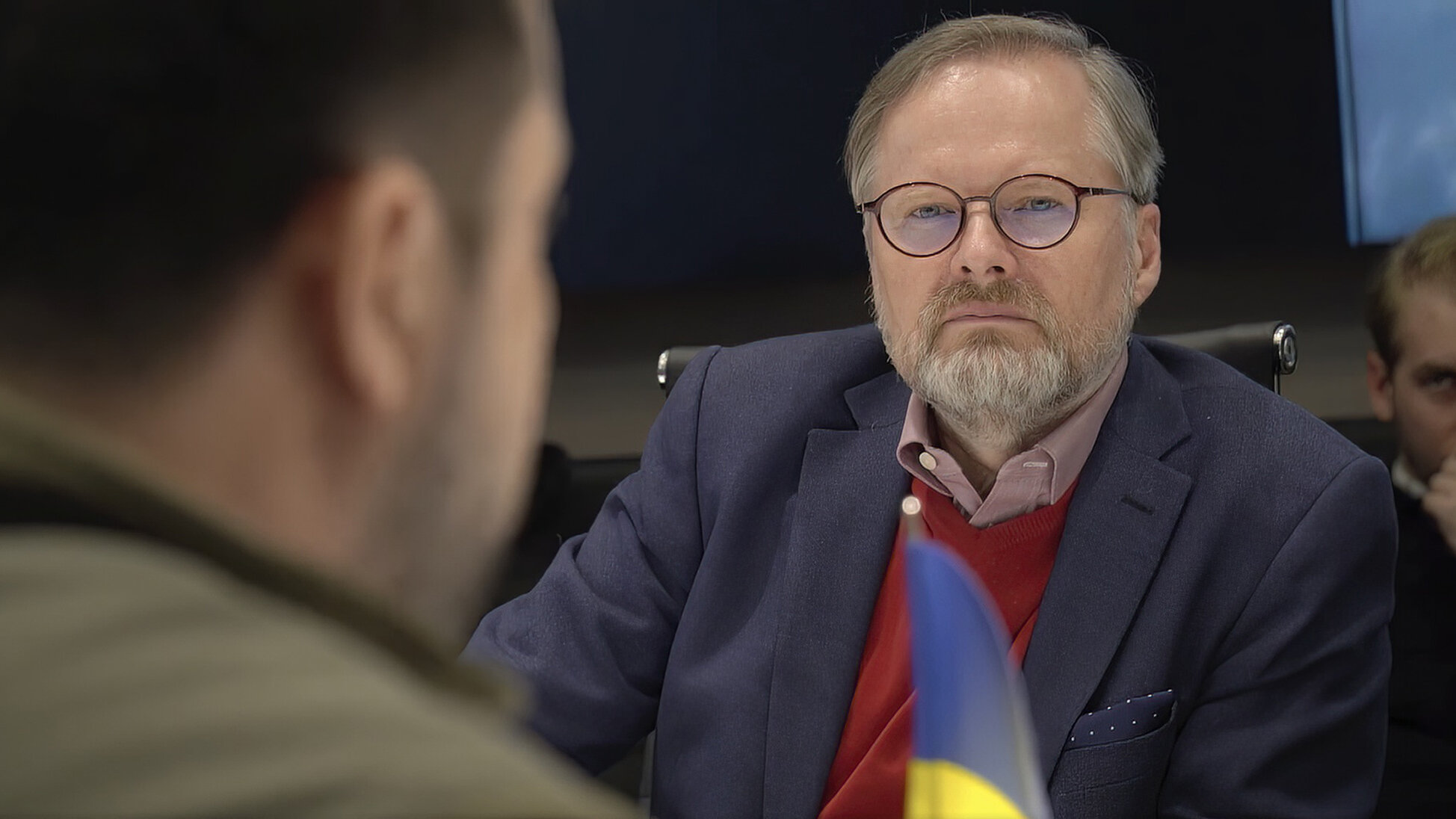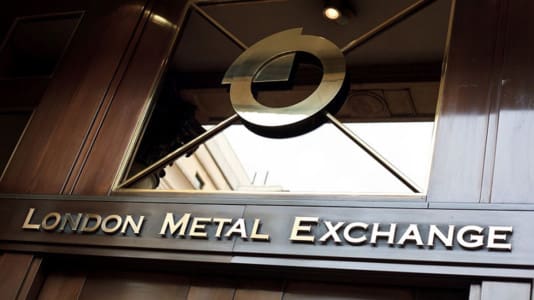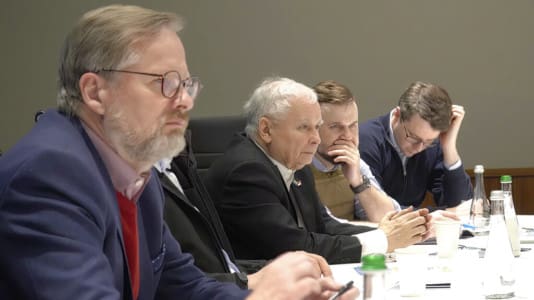French President Emmanuel Macron’s public image has suffered noticeable wounds in recent days. The Élysée Palace first published photos of Macron after a phone call with Vladimir Putin. In them, Macron either has his head in his palms or features a sullen expression. The contrast with Ukrainian President Volodymyr Zelensky — who still is full of determination even while the Russians bomb Kyiv — could not be bigger.
In another series of photos, Macron copied Zelensky’s style. He wears jeans and a hooded sweatshirt with the emblem of French paratroopers, his face unshaven. However, considering Paris was not in danger of any Russian bombing, he earned more ridicule.
At the same time, Macron’s obsession with having the right image clearly symbolizes the overall approach of the western part of Europe to the war in Ukraine. Yes, it sends weapons and has imposed severe sanctions, but it remains spared the worst spillover effects. There is still a certain fear that Moscow could be pushed too much.
In contrast, Central Europe (constantly referred to in the Western media as Eastern Europe) has nothing to be ashamed of. The joint trip of the prime ministers of the Czech Republic, Poland, and Slovenia to besieged Kyiv showed this well.
The EU seems to be distancing itself from the trip
Although Petr Fiala, Mateusz Morawiecki, and Janez Janša traveled “after consultation with European Council President Charles Michel and European Commission President Ursula von der Leyen,” some concerns could be noticed about the whole expedition.
According to BBC correspondent Jessica Parker, the EU emphasized that the three prime ministers had not received a specific “mandate” from the EU, and Michel allegedly pointed out “security risks.” This suggests that the EU is trying to distance itself from the whole trip.
The “consultations” about the expedition probably took place behind the scenes at the EU summit in Versailles last week, and the three prime ministers decided to show their Western colleagues what symbolism truly looks like.
[pp id=30569]
So far, the war in Ukraine is primarily considered an Eastern European war. The West sympathizes with Ukraine and is shocked by Russian brutality but does not feel existentially threatened. At Kyiv, the fight is not only on behalf of Prague (and Warsaw, Bratislava, Tallinn, Vilnius, and Riga) in the sense of defending some common ideals, but the prevailing feeling in our part of Europe is that Putin will not be satisfied with Ukraine. In a few years, he could try to usurp another piece of the former Soviet empire.
The war in Ukraine is thus primarily an opportunity for the eastern wing of the EU to emancipate itself, and the three prime ministers from “Eastern” Europe brought a message of support to Kyiv.
Poland is a major weapons hub for Ukraine and a major destination for refugees. Morawiecki also pushed for the partial cutting off of Russia from the SWIFT system. The east of the EU is also not yet asking other countries to take over responsibility for the refugees, they just want material assistance so that they can manage the influx.
Their actions show that these days, the EU’s center has shifted significantly eastwards. The “new” Europe is not a region of freeloaders parasitizing on the wealth of the “old” Europe. In a real crisis, it is dependable and can even take the initiative.
Central Europeans still treated with disdain
Nevertheless, the belief that this corner of Europe needs to be civilized is not fading. Last week, for example, the European Parliament proved this by approving a resolution calling for sanctions on Poland and Hungary for alleged violations of European values. This sentiment is also evidenced by a bizarre article published in The New York Times entitled “Two Refugees, Both on Poland’s Border. But Worlds Apart” describes the story of two refugees in Poland, 21-year-old Katya Maslova, and 22-year-old Albagir. The U.S. newspaper expressed surprise that Maslova, who fled Ukraine from the war, faced a very different reception than Albagir, who illegally crossed the border from Belarus where he arrived from Sudan. The clear subtext of the article is that Poles (but also the wider European society) are incorrigible racists.
That is why yesterday’s visit to Kyiv is so important. It proves once again that the east of the EU is guiding the West this time. Going to war-torn Kyiv requires a considerable amount of personal courage, and despite the doubts, the rest of the West is showing tacit appreciation for this move. For example, yesterday’s New York Time’s homepage displayed the article titled “European Leaders Brave Russian Bombardment in Visit to Kyiv.”
Previously, the main tandem of the EU was the Macron-Merkel axis. These days, it is Morawiecki-Fiala who lead the conversation. Macron reportedly envies that he did not come up with the idea to visit Kyiv first. He knows that his paratrooper sweatshirt is not really suitable to help him to better his image.





